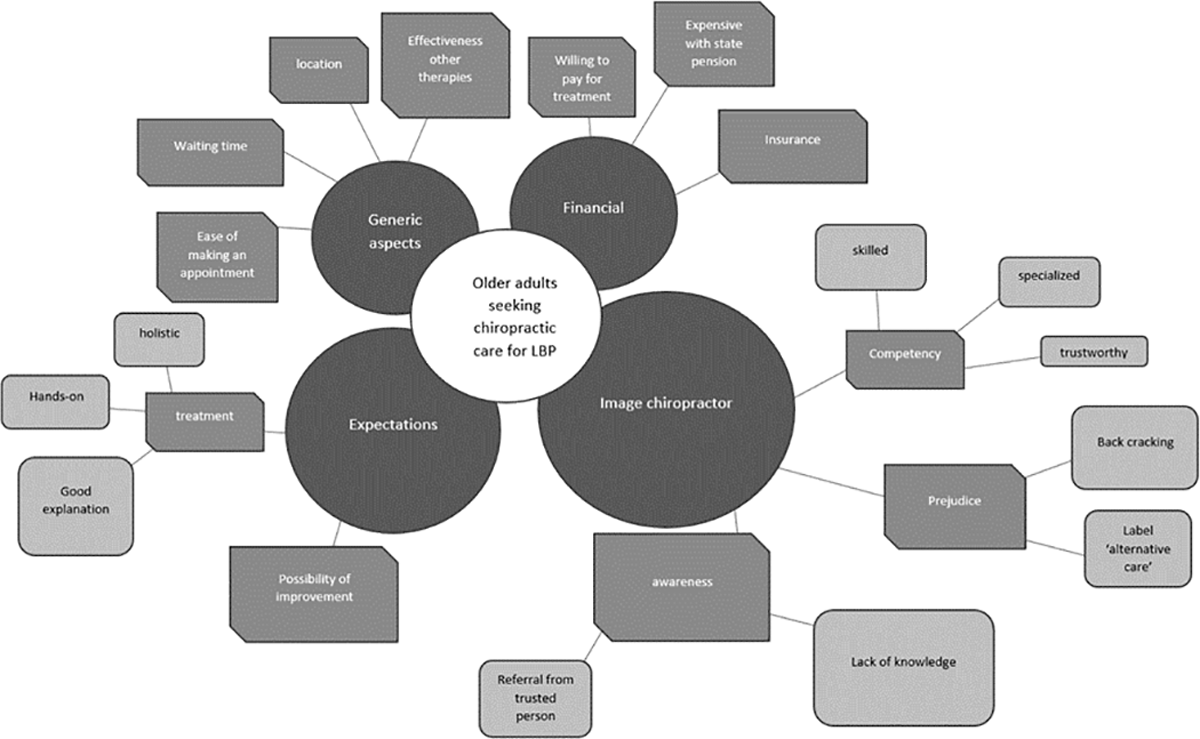Regional Supply of Chiropractic Care and Visits to Primary Care Physicians for Back and Neck Pain
SOURCE: J Am Board Fam Med. 2015 (Jul); 28 (4): 481–490
Matthew A. Davis, MPH, DC, PhD, Olga Yakusheva, PhD,
Daniel J. Gottlieb, MS and Julie P.W. Bynum, MD, MPH
Dartmouth Institute for Health Policy and Clinical Practice,
Dartmouth College,
Geisel School of Medicine,
Hanover, NH
BACKGROUND: Whether availability of chiropractic care affects use of primary care physician (PCP) services is unknown.
METHODS: We performed a cross-sectional study of 17.7 million older adults who were enrolled in Medicare from 2010 to 2011. We examined the relationship between regional supply of chiropractic care and PCP services using Spearman correlation. Generalized linear models were used to examine the association between regional supply of chiropractic care and number of annual visits to PCPs for back and/or neck pain.
RESULTS: We found a positive association between regional supply of chiropractic care and PCP services (rs = 0.52; P <.001). An inverse association between supply of chiropractic care and the number of annual visits to PCPs for back and/or neck pain was apparent. The number of PCP visits for back and/or neck pain was 8% lower (rate ratio, 0.92; 95% confidence interval, 0.91-0.92) in the quintile with the highest supply of chiropractic care compared to the lowest quintile. We estimate chiropractic care is associated with a reduction of 0.37 million visits to PCPs nationally, at a cost of $83.5 million.
There are more articles like this @ our:
CONCLUSIONS: Greater availability of chiropractic care in some areas may be offsetting PCP services for back and/or neck pain among older adults.
Keywords: Back Pain, Complementary Medicine, Primary Health Care
From the FULL TEXT Article:
Background
In recent years, health care visits for back and neck pain have increased substantially, with annual expenditures on the diagnosis and management exceeding $85 billion. [1, 2] Both back and neck pain are independently in the top 5 diseases that contribute to disability among Americans, outranking other diseases such as diabetes, chronic pulmonary disease, and ischemic heart disease. [3] Expansion of the use of health care services for back and neck pain, and the projected increase in the Medicare-eligible population, in combination with expanded coverage of millions of Americans through the Affordable Care Act, have the potential to strain an already overstretched primary care physician (PCP) workforce.
Back pain is among the most common reason adults visit a primary care provider. [4] While many individuals who experience back and/or neck pain initially visit a PCP, [5] other types of services can potentially serve as a point of access to the health care system. [6] In particular, adults with back and/or neck pain can seek chiropractic care without referral from a PCP. [7] Currently, there are an estimated 75,000 chiropractors across the country practicing predominately in privately owned offices and clinics. [8] In the United States chiropractors are registered providers who participate in many state Medicaid programs, most private health care insurances, and the Center for Medicaid & Medicare Services (CMS). [7, 9, 10] National Medicare spending on chiropractic care has increased substantially in recent years: from $466 million in 2006 to approximately $700 million in 2011. [11, 12] Although chiropractic care has been a covered service since the 1970s, it has recently come under scrutiny by the Office of the Inspector General, [11-14] and its merits are starting to be questioned by the general public. [15]
SOURCE: Read the rest of this Full Text article now!





Leave A Comment